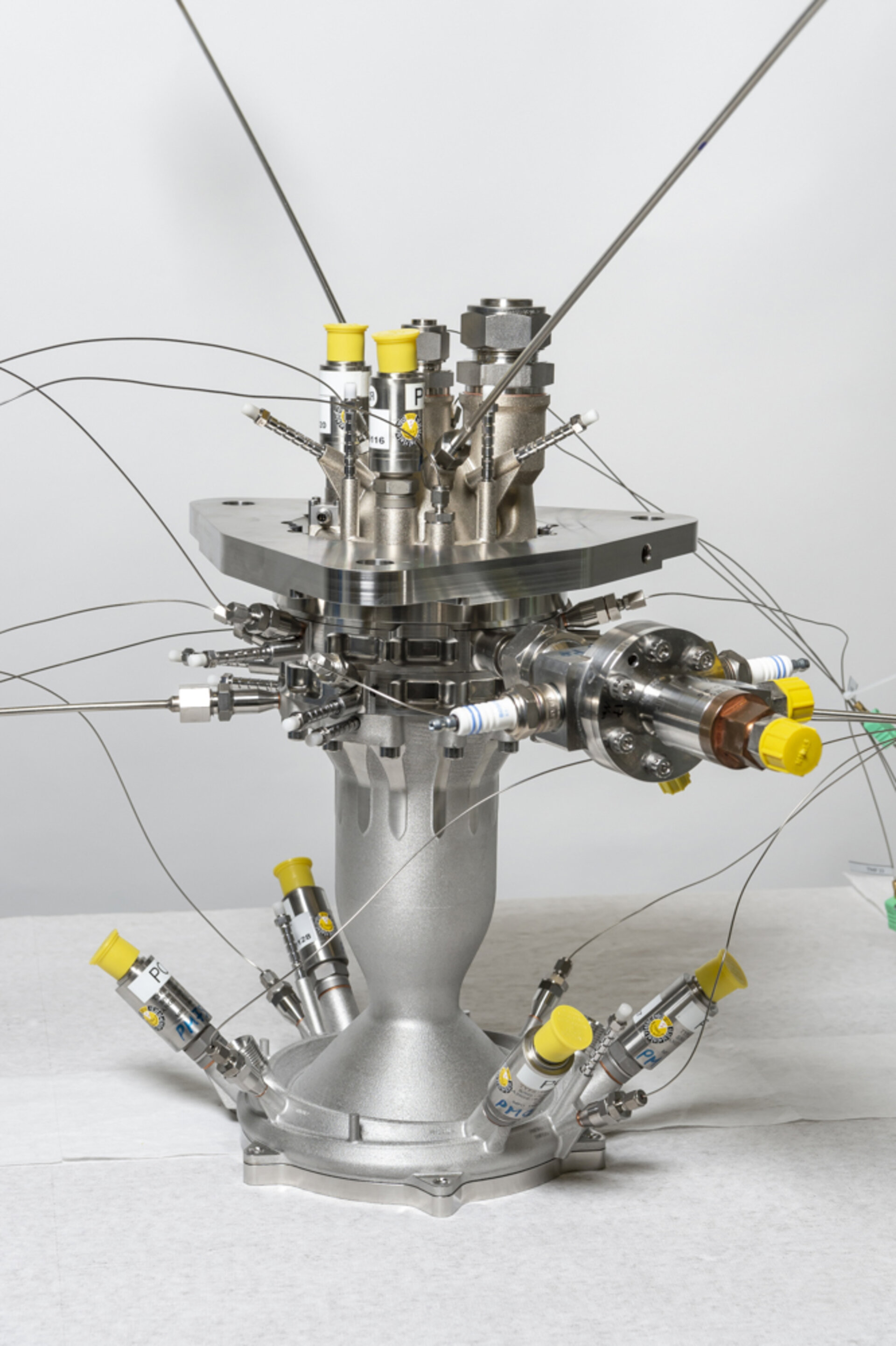3D-printed storable-propellant rocket engine design tested
The recent hot firing of a full-scale rocket thrust chamber assembly takes us a step closer to proving 3D-printing for an engine design destined for rocket upper stages, in-orbit transportation applications (kick-stages and space-tugs), microlaunchers, and exploration spacecraft such as a lunar lander and ascent stage on the Moon.
Manufactured entirely by 3D-printing, this thrust chamber is designed for ‘storable propellants’, called such because they can be stored as liquids at room temperature. Rocket engines that are powered this way are easy to ignite reliably and repeatedly on missions lasting many months.
This Combustion Chamber demonstrator, with a reference thrust of 2.5kN, was hot-fired for 560 seconds at the DLR German Aerospace Center’s Lampoldshausen testing facility in Germany.
The knowledge gained from this test campaign will be applied in turn to future engine designs to achieve a thrust range of about 2–10kN.
Developed by ArianeGroup within ESA’s Future Launchers Preparatory Programme, this combustion chamber helps to investigate flow and heat transfer phenomena on surfaces created by 3D printing – otherwise known as additive layer manufacturing.

Additive layer manufacturing builds up a part layer by layer instead of the traditional process of cutting away bulk material. Complex, optimised structures, impossible to manufacture via classical methods, can be created using reduced amounts of material and energy, and in far fewer manufacturing steps.
A complex arrangement of cooling channels has been printed into the structure of the combustion chamber, to cool the chamber walls.
“3D-printing and qualifying parts for hot-firing and ultimately flight is a challenge, especially when dealing with fine, complicated structures, like the cooling channels of our demonstrator” added Wenzel Schoroth, propulsion engineer at ESA. “This hot-fire test is a way of demonstrating the effectiveness of our processes, as well as learning more about the flow phenomena within additively manufactured rocket engines.”
On the test bench, the cooling mechanism is diverted away from the propellant feed via an adapter between the combustion chamber and the injector head – both of which have been additively manufactured.

This allows engineers greater flexibility to investigate the cooling system separately from the combustion process to study the thermodynamic and fluid dynamic properties of the additively manufactured structures and surfaces.
Further activities will focus on the application of green, environmentally friendly propellants for a larger engine delivering 5 kN of thrust.
Additionally, ESA is developing additive manufacturing technology for larger engine demonstrators with cryogenic propellants such as Prometheus and ETID.















 Germany
Germany
 Austria
Austria
 Belgium
Belgium
 Denmark
Denmark
 Spain
Spain
 Estonia
Estonia
 Finland
Finland
 France
France
 Greece
Greece
 Hungary
Hungary
 Ireland
Ireland
 Italy
Italy
 Luxembourg
Luxembourg
 Norway
Norway
 The Netherlands
The Netherlands
 Poland
Poland
 Portugal
Portugal
 Czechia
Czechia
 Romania
Romania
 United Kingdom
United Kingdom
 Slovenia
Slovenia
 Sweden
Sweden
 Switzerland
Switzerland

























